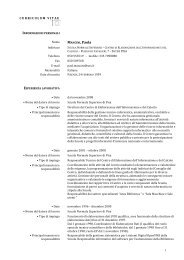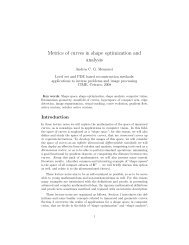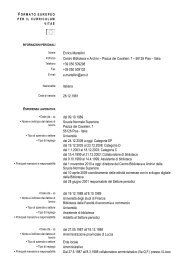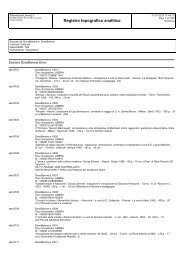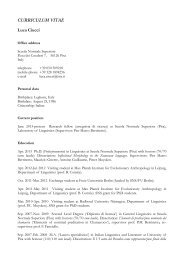Kolmogorov equation associated to the stochastic reflection problem ...
Kolmogorov equation associated to the stochastic reflection problem ...
Kolmogorov equation associated to the stochastic reflection problem ...
You also want an ePaper? Increase the reach of your titles
YUMPU automatically turns print PDFs into web optimized ePapers that Google loves.
y a straightforward perturbation argument, taking avantage of <strong>the</strong> inclusion<br />
(1.4). In this way we obtain a solution ϕ ∈ D(N) of (1.6) only for λ<br />
sufficiently large. Also, obviously, measure ν is not invariant for <strong>the</strong> corresponding<br />
semigroup Q t . However, using <strong>the</strong> fact that opera<strong>to</strong>r Q t is compact<br />
in L 2 (K, ν), we can show <strong>the</strong> existence of an invariant measure ζ for Q t so<br />
that <strong>the</strong> extension of Q t <strong>to</strong> L 1 (K, ζ) is <strong>the</strong> natural transition semigroup <strong>associated</strong><br />
with <strong>equation</strong> (1.5). Notice that this semigroup is not reversible<br />
(when F is not of potential type).<br />
We conclude this section by precising <strong>the</strong> assumptions and notation which<br />
will be used throughout.<br />
Assumptions<br />
We are given a real separable Hilbert space H (with scalar product 〈·, ·〉 and<br />
norm denoted by | · |). Concerning A, K and W we shall assume that<br />
Hypo<strong>the</strong>sis 1.1. (i) A: D(A) ⊂ H → H is a linear self-adjoint opera<strong>to</strong>r<br />
on H such that 〈Ax, x〉 ≥ δ|x| 2 , ∀ x ∈ D(A) for some δ > 0. Moreover,<br />
A −1 is of trace class.<br />
(ii) There exists a convex C ∞ function g : H → R with D 2 g positively<br />
defined, i.e., 〈D 2 g(x)h, h〉 ≥ γ|h| 2 , ∀h ∈ H where γ > 0, such that<br />
K = {x ∈ H : g(x) ≤ 1}, Σ = {x ∈ H : g(x) = 1}.<br />
(iii) W is a cylindrical Wiener process on H of <strong>the</strong> form<br />
W (t) =<br />
∞∑<br />
β k (t)e k , t ≥ 0,<br />
k=1<br />
where {β k } is a sequence of mutually independent real Brownian motions<br />
on a filtered probability spaces (Ω, F , {F t } t≥0 , P) (see e.g.[7]) and<br />
{e k } is an orthonormal basis in H which will be taken as a system of<br />
eigen-functions for A for simplicity, i.e.<br />
where α k ≥ δ.<br />
Ae k = α k e k , ∀ k ∈ N,<br />
We notice that <strong>the</strong> interior ˚K is nonempty since D 2 g is positive definite.<br />
5


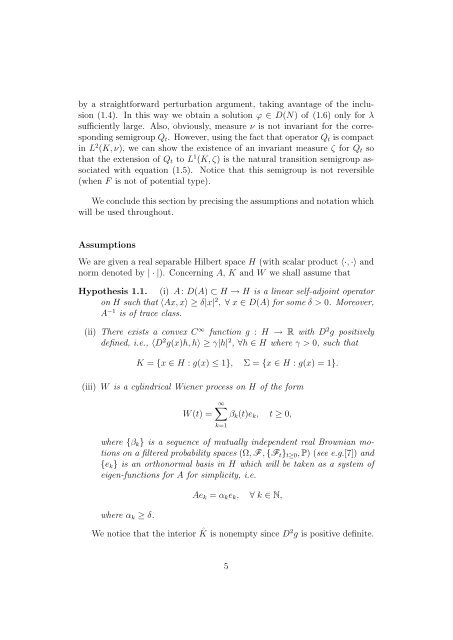

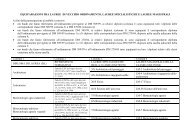
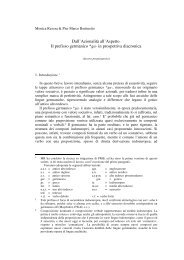
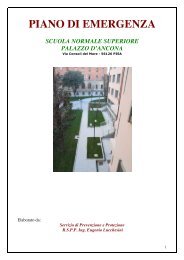
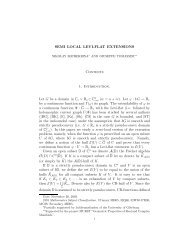
![4. Ghost [Å] vowels in French - Laboratorio di Linguistica](https://img.yumpu.com/49999334/1/184x260/4-ghost-a-vowels-in-french-laboratorio-di-linguistica.jpg?quality=85)



